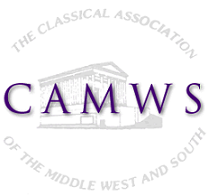Emmett L. Bennett, Jr.
1918-2011
Emmett Leslie BENNETT, Jr., played a major role in the decipherment of the ancient Minoan language known as Linear B. Born in Minneapolis on 12 July 1918, he received a B.A. from the University of Cincinnati in 1939 and an M.A. in 1940. In 1941 he married Marja Dorothy Adam. Their union produced three sons and two daughters.
Bennet’s mentor, the archaeologist Carl Blegen (1887-1971), also a Minneapolis native, having excavated the mound of Hisarlik, the presumed site of ancient Troy (1932-8), continued his exploration of Mycenaean culture at the excavation at Nestor’s Palace (Ano Englianos) at Pylos (in the western Peloponnese) in 1939 under the auspices of the University of Cincinnati and the Greek Archaeological Service. Blegen retrieved numerous clay tablets that contained mainly municipal records inscribed in a language partly ideograms (a single sign capable of conveying complex notions), which would be useful in accounting, and partly phonetic characters found in regular combinations. The language had first been found on clay tablets discovered in 1900 at the site of the palace of Knossos (The conflagration that destroyed both palaces also fired and thus preserved the otherwise friable clay tablets.) by the archaeologist Sir Arthur Evans (1851-1941). Evans did not believe the language was a form of Greek and posited a pre-Mycenaean civilization which he called Minoan and he named the language of the tablets Linear B, as he had named the earlier language of Cretan tablets Linear A. Linear A is the second known written language in the Aegean and Helladic areas, Linear B the third (the first is unknown) and dates from the second millennium BCE. Blegen’s excavation at Pylos lasted only a year before it was interrupted by the onset of World War II (it was not taken up again until 1952), but he was able to entrust the clay tablets to Bennett, who used them as the basis of his M.A. thesis in 1940 before joining the Army as a cryptanalyst. Cryptology during the war, particularly on coded Japanese transmissions, by Bennett, who worked on Japanese code from 1942 to the war’s end, the Cambridge linguist John Chadwick (1920-98), and Bennett’s associate Alice Kober (1906-50), who had been an assistant to Evans’s associate, the archaeologist Sir John Myres (1869-1954) and a member of the Brooklyn College Classics Department, indirectly led to the decipherment of Linear B because these scholars who taught themselves Japanese while also working on Linear B were training themselves to notice the subtle differences between ideograms. Kober, for instance noticed that there seemed to be variant endings on many words and posited that Linear B was perhaps an inflected language like Latin or Greek. Following the war, Bennett returned to Cincinnati and in 1947 produced a dissertation, “The Minoan Linear Script from Pylos,” a descriptive catalogue of about 80 characters showing the principal variants in the formation of each character but with no attempt at decipherment. Kober’s notions of declension and Bennett’s catalogue of signs greatly served the man who, aided by Chadwick, ultimately deciphered Linear B in 1952, the young English architect and amateur classicist, Michael Ventris (1922-56). Ventris determined, against Evans’s notion, that the language was in fact a pre-Homeric form of Greek.
After completing his dissertation, Bennett was an instructor in classics at Yale (1947-51), and then assistant professor (1951-8). In 1955 he published The Pylos Tablets: Texts of the Inscriptions Found 1939-1954(Princeton: Princeton University Press) with an introduction by Blegen. After spending 1958-9 at the University of Texas, he was visiting lecturer at the Institute for Research in the Humanities at the University of Wisconsin-Madison (1959-60), lecturer (1960-1), and acting director (1968-9). He joined the Wisconsin Classics department in 1960 was promoted to associate professor the next year and professor the year after that. He was a Fulbright resident scholar in Athens (1953-4) and Cambridge (1965), and a Guggenheim fellow at the Institute for Advanced Study in Princeton (1955-6). He began editing Nestor in 1957. He retired in 1988 and died in Madison on 15 December 2011 at the age of 93.
— Ward Briggs
